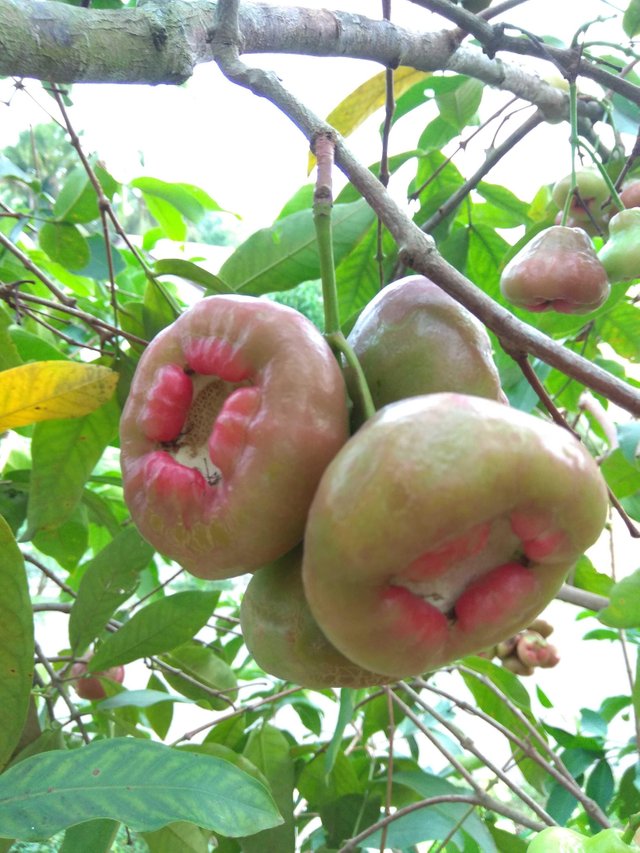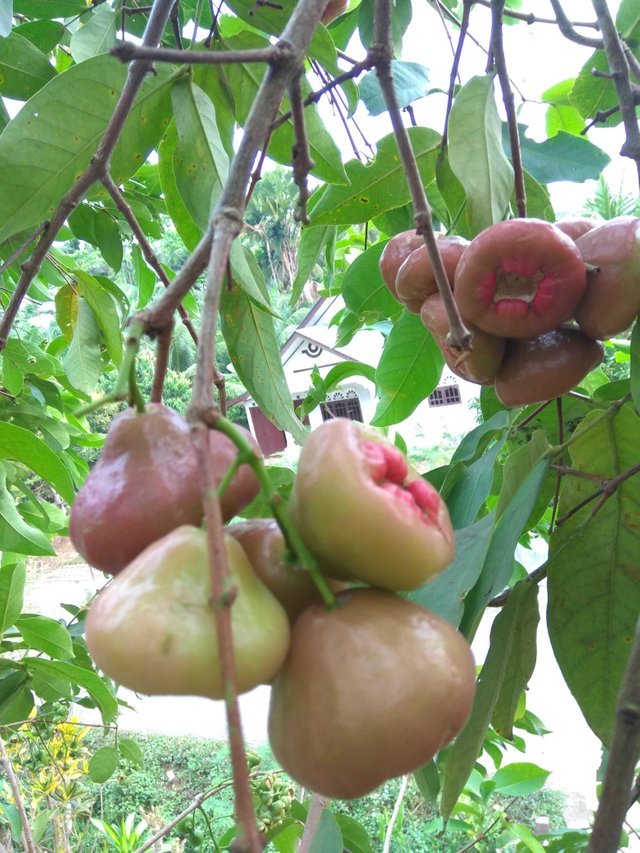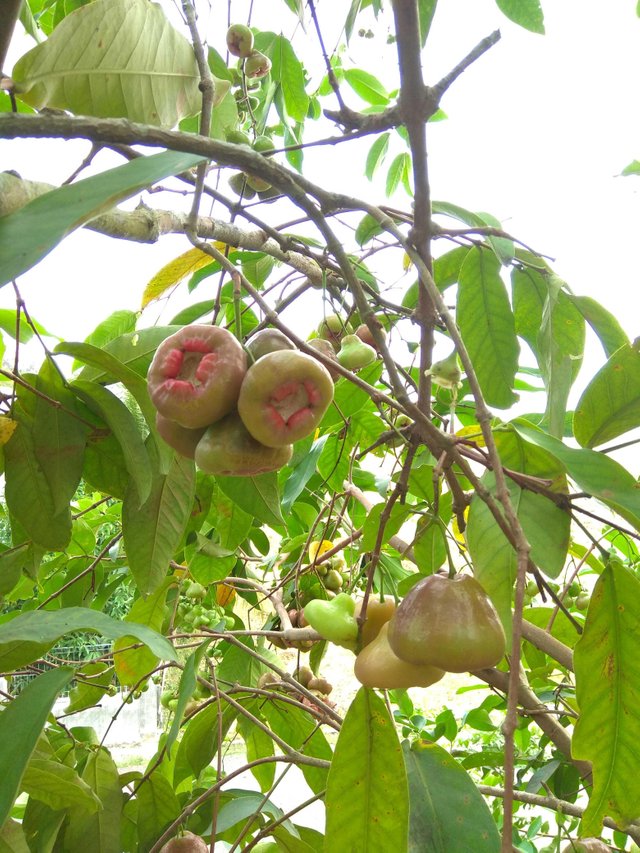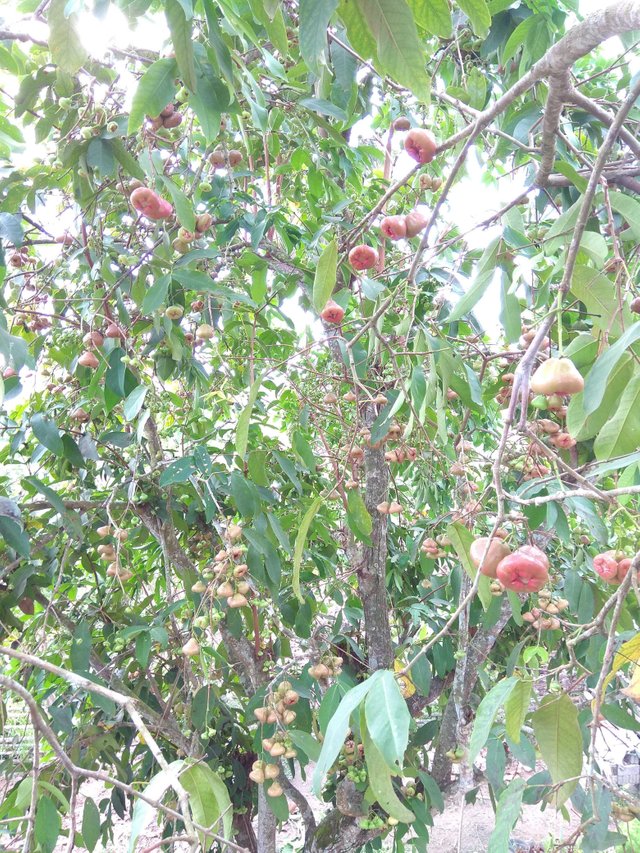Benefits ( apple guave benefits)

Apples apple-like apples are very easy to distinguish from other types of water cashew. The fruit always has a red petal marks that contrast with the color of the violet white fruit. When observed, this guava actually experienced three times the color change, which is green when young, white when old, violet white clan when ripe. The flesh is hard textured and tastes sweet. The size of the fruit including medium. Each kg contains 15 pieces. The fruit is seeded and some are not.

Benefits
With the taste of the average sweet and fresh and contains a lot of water, water guava finally became one of the fruits that are very popular community. Many people use water cashew fruit as a thirst release fruit.
Terms Grow
Guava water and jambu semarang able to grow in almost all regions of Indonesia. In fact, both are able to adjust to all kinds of soil as long as the soil is fertile, friable, and lots of water. Depth of ground water that can still be tolerated only up to 200 cm. This plant likes low rainfall with rainy season not more than eight months. For cashew, the height of the desired place to grow well is the lowlands and highlands up to 1,000 m above sea level, while cashew guava only up to 500 m above sea level.

Cultivation Guidelines
Seed propagation is common. Seeds are sometimes abortive, and some cashew cultivars tend not to have seeds. Propagation with clones via transplantation, tapping, or pasting is not difficult. Transplantation is generally carried out in Southeast Asia. The modified Forkert method is recommended for attachment. The same or different kinds of Syzygium seeds can be used as rootstocks. In Java, cashew 'klampok' or 'kopo' (S. pycnanthum Merr. & Perry, syn.Eugenia densiflora (Blume) Duthie) are recommended as rootstocks because they are stubborn and not attacked by termites. Spacing ranges between 8-10
Maintenance
The cashew tree receives little attention after the first or second year, at which time fertilization, weeding, mulching and irrigation can rapidly increase tree volume. The fruiting tree appears to be very responsive to the compound fertilizer given after the harvest and added with a leaf fertilizer as soon as flowering is formed.

Pests and Diseases
There is no specific recommendation for crop protection, but the occurrence of pests and diseases necessarily requires a study of the organisms causing and eradicating them.
Harvest and Post Harvest
The guava fruit is thin and soft; the fruit should be picked by hand twice a week, and should be handled with care. Fruits should be consumed or preserved for several days after harvest

https://www.youtube.com/paulbegley34